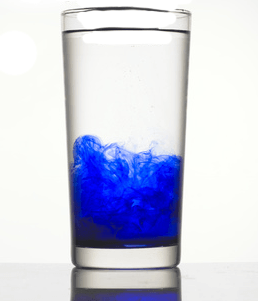Journey of a Flavor

Flavors, much like perfumes, are typically composed of several different layers; top, middle, and base notes. Most flavor compounds are also used in fragrance, as well. You can think of flavors as perfume for your food! With the recent popularity of gourmand fragrances, the line has really blurred.
Flavors can be made of essential oils, extracts, or pure flavor compounds, but are always crafted in the same way. For example, a cola flavor could be made of whole ingredients as in this educational formula:
Finely grated zest and juice of 1 lemon
Finely grated zest and juice of 1 lime
Finely grated zest and juice of 2 oranges
3 large (5-inch) cinnamon sticks, broken into small pieces
2 tablespoons dried bitter orange peel
1/4 teaspoon finely grated clove
1/2 teaspoon vanilla extract
Or essential oils and pure flavor compounds, as in this one:
40 parts Lemon Essential Oil
20 parts Orange Essential Oil
20 parts Lime Essential Oil
1 part Cinnamon Bark Essential Oil
15 parts Cinnamaldehyde (the main flavor component of cinnamon)
2 parts Eugenol (the main flavor component of clove)
2 parts Vanillin (the main flavor component of vanilla)
In both of these recipes, the citrus, acts as a top note. Light molecules from lime, lemon, and orange oils, such as limonene, alpha/beta pinene, myrcene, and linalool come off of the mixture first. Then, the cinnamon and other spices act as a middle note, and vanilla is our warm, caramellic base note. You probably don’t notice each of these distinct flavors when you enjoy a cola soda. Rather, they all blend seamlessly to create a new flavor, to the point that it might be a bit strange to see so many familiar ingredients in a cola flavor. This is the magic of flavor creation, and why it can be such a long process to create a sum greater than its parts.
The starting point of any flavor is the vision of an end product, composed of anywhere from one to three hundred unique flavor compounds. In our flavor creation lab, we have access to hundreds of molecules used in the flavor and fragrance industry. By starting with basic components and working toward a finished flavor (with a bit of trial and error), we can deliver a delicious experience to our customers.
Consider, for example, Wintergreen Flavor. Wintergreen is one of the simplest of flavors, based on the essential oil of the wintergreen plant. Let’s see two different paths to a flavor:
1a. Using a GC/MS to analyze the essential oil, we can tell what molecules compose its unique flavor. Essentially, the particular flavor fingerprint of wintergreen is from a single molecule: methyl salicylate. This molecule is used in wintergreen and mint-flavored products such as toothpaste, mouthwash, candies, gum, and flavors. Knowing this, a flavor can begin to be formed by experimenting with methyl salicylate at varying concentrations and in different solvents.
Following the guidelines that are established for each molecule’s use in flavors (known as Good Manufacturing Practices) we can begin the taste test. Sensory testing can be done in non-dairy whipped topping (especially unflavored whipped toppings, sometimes marketed as “all natural”), water, or sparkling water. Often, it is done in a combination of those three, as each will bring out a different characteristic. Once a formula has been pinpointed, we can go on to the next step.
1b. After deciding that we want a flavor with a particular description (like a very natural wintergreen, or a wintergreen candy flavor), or receiving requests from customers, we can contact a private label company that makes flavors for us.
2. Whether we send one of our private label manufacturing partners a sample of a flavor we blended as inspiration for we would like them to produce, provide them with the exact formula of what we want, or request them to design something for us, a sample is professionally produced (adhering to strict food safety guidelines) and sent back to us.
Most new flavors we carry are either designed for us specifically, or designed to reproduce another flavor we carry, but with a specific attribute (such as less flammability or omitting a certain ingredient). Why don’t we design all flavors in our lab? Private label flavor companies have large flavor laboratories. Their highly trained flavor chemists can draw on decades of experience and a palette of thousands of chemicals to craft a flavor to our specifications. This translates to higher quality, more complex flavors for our customers.
3. From receiving a sample, we test its sensory properties. We taste the sample and ask ourselves a few important questions. If we wanted a precise match, is this second sample indistinguishable? If we wanted a brand new flavor, is this unique enough from what we already have? Would our customers enjoy this? What does it taste like? At that point, we can either deny the new flavor, sending it to our sample archive so we can revisit it if we ever find that it fits a specific request or need; ask for changes, either to tweak a particular facet of the flavor or to omit an ingredient; or we can accept the sample.
4. Once we accept a sample, we order it from the manufacturer, prepare the website for the new flavor to be added, and notify our production department. We also start playing around with recipes to use the sample in. Once it arrives and is stocked on our shelves, we are ready to accept orders and announce its release.
From start to finish, developing a flavor can be a long process, but a very rewarding one. The time we put in to bringing a simple Wintergreen Flavor or even an incredibly complex chocolate flavor to our customers is always savored. What will we bring out next? Stay tuned to find out, or email us a suggestion to become one of our cutting edge tastemakers.
